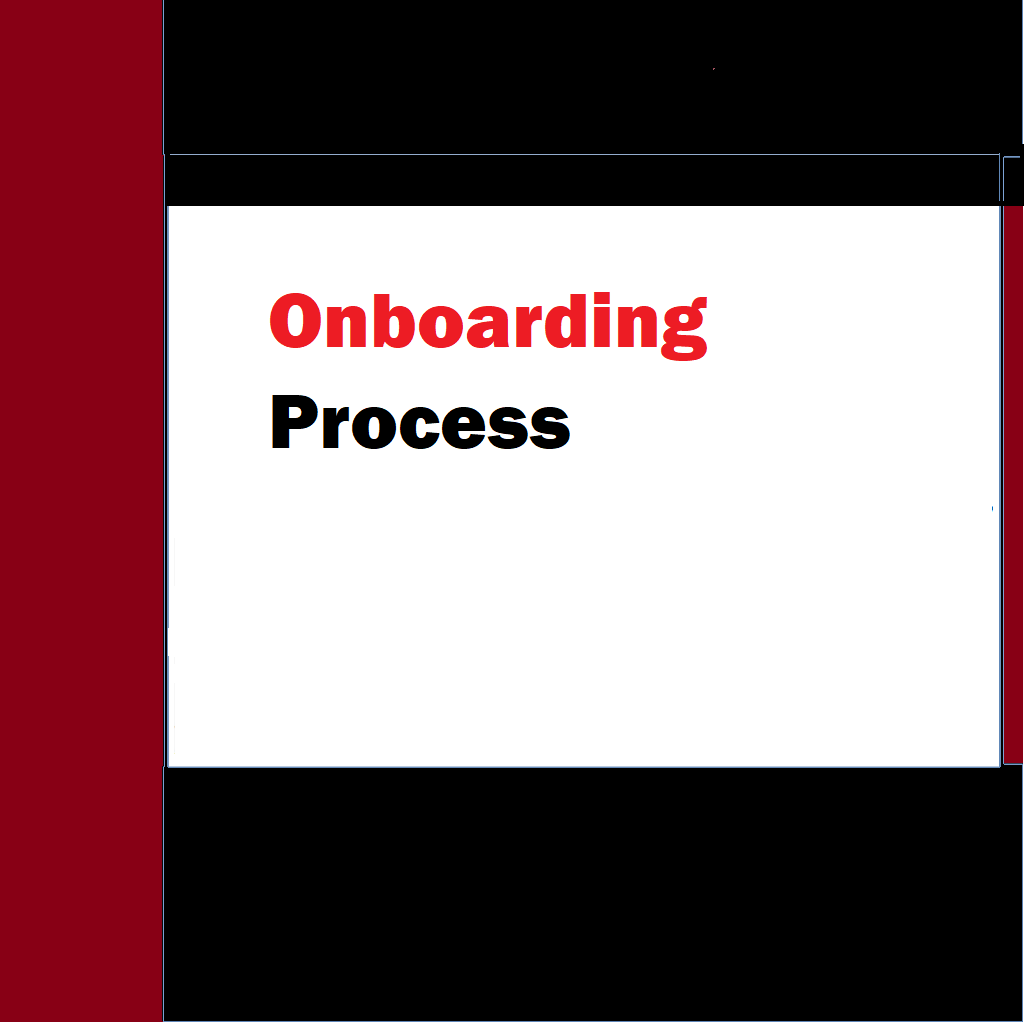Today as the world is going more and more technical, systematic and process oriented, onboarding process has become one of the default start up process for clients. These are some of the processes we hear about daily but hardly do we try to understand the nuances of this. Let’s find more about it today in this article. The term “onboarding” originated in the field of human resources and has since been adopted in various industries, including software development. Although it’s challenging to pinpoint a single individual who coined the term, its usage became prevalent in the corporate world during the late 20th century.
The concept of onboarding emerged as a response to the recognition that the initial experiences of new employees greatly influenced their long-term success and engagement within an organization. Prior to the formalization of onboarding practices, the focus was primarily on orientation, which mainly involved completing paperwork and learning basic job tasks. However, organizations realized that a more comprehensive and strategic approach was needed to facilitate the integration and retention of new employees.
The early 2000s saw a shift in how companies approached employee onboarding, with an emphasis on providing a structured and supportive experience. The onboarding process expanded beyond the first day or week of employment to encompass a more extended period that aimed to help new employees become fully functional and engaged members of the organization. As the software industry evolved, the concept of onboarding was adapted to software projects and development teams. The onboarding process in software projects includes familiarizing new team members with the project’s technical aspects, tools, and processes, in addition to integrating them into the team dynamics. Today, onboarding is considered a crucial component of talent management and organizational effectiveness. It focuses not only on providing the necessary information and resources but also on fostering a sense of belonging, setting expectations, and establishing a foundation for long-term success and productivity. As a result, the onboarding process has become a standard practice in many organizations, recognized for its impact on employee satisfaction, retention, and performance.
The onboarding process in a software project refers to the activities and steps involved in integrating new team members into the project effectively. It encompasses everything necessary to help them understand their roles, responsibilities, and the project itself, as well as to acclimate them to the team and the organization.
The onboarding process typically includes the following components:
1. Orientation: New team members are provided with an overview of the project’s goals, objectives, and context. They may receive introductory training on the technology stack, development methodologies, and project-specific tools and processes.
2. Documentation and Resources: New team members are given access to relevant project documentation, such as requirements, design specifications, architecture diagrams, coding standards, and any existing technical documentation. They are also provided with access to project repositories, version control systems, bug tracking tools, and other necessary resources.
3. Training and Skill Development: Depending on the specific requirements of the project, new team members may undergo training to acquire the skills needed for their roles. This could involve learning specific programming languages, frameworks, libraries, or tools. Training sessions, workshops, or online resources may be provided to facilitate their learning process.
4. Team Introduction: New team members are introduced to their colleagues, stakeholders, and other key individuals involved in the project. This includes team leads, project managers, product owners, and other team members they may collaborate with. This introduction can be in the form of in-person meetings, virtual introductions, or team-building activities.
5. On-the-Job Support: New team members are paired with experienced team members who can provide mentorship, guidance, and support during their initial period. This helps them navigate the project, clarify any doubts, and learn from the expertise of others. Regular check-ins and feedback sessions may be conducted to monitor their progress and address any challenges they face.
6. Gradual Integration: Rather than overwhelming new team members with complex tasks right away, the onboarding process often involves gradually increasing their responsibilities and involvement in the project. This allows them to gain familiarity and confidence while minimizing the risk of errors or setbacks.
The specific details of the onboarding process may vary depending on the organization, project size, complexity, and the role of the new team member. However, the overarching goal is to provide a smooth transition into the software project, enabling new members to become productive contributors as quickly as possible.
Winning the customers goodwill
When customers are onboarded properly, they typically experience a range of positive emotions and sentiments. Here are some common feelings customers may have when they go through a well-executed onboarding process:
1. Welcomed: Customers feel warmly welcomed by the organization. They sense that their business is valued and appreciated, leading to a positive first impression.
2. Supported: Customers feel supported throughout the onboarding process. They receive clear instructions, guidance, and access to resources that help them understand and navigate the product or service effectively.
3. Empowered: Customers feel empowered to use the product or service confidently. They gain the necessary knowledge and skills to utilize the features, resolve minor issues, and maximize the benefits the offering provides.
4. Informed: Customers feel well-informed about the product or service and its functionalities. They understand how it addresses their needs and can make informed decisions about its usage within their specific context.
5. Engaged: Customers feel engaged during the onboarding process. They actively participate, ask questions, and provide feedback. They are encouraged to share their goals and challenges, creating a collaborative and interactive environment.
6. Excited: Customers feel excited about the possibilities the product or service offers. They see the potential value it can bring to their business or personal lives, generating enthusiasm and anticipation for the future.
7. Confident: Customers feel confident in their ability to use the product or service. They trust that the onboarding process has equipped them with the necessary skills and resources to succeed, which boosts their overall confidence and self-assurance.
8. Respected: Customers feel respected and listened to throughout the onboarding process. Their opinions, concerns, and feedback are taken seriously, fostering a sense of trust and mutual respect between the organization and the customer.
9. Satisfied: Customers feel satisfied with the onboarding experience and the overall interaction with the organization. They perceive that their needs have been met, and their expectations have been exceeded, leading to a positive overall impression.
10. Motivated: Customers feel motivated to continue their journey with the organization. They are inspired to fully explore and leverage the product or service’s capabilities, realizing the potential benefits and driving their own success.
When customers experience these positive emotions during the onboarding process, it lays the groundwork for a long-lasting and mutually beneficial relationship between the customer and the organization. It increases the likelihood of customer retention, advocacy, and ongoing satisfaction, ultimately contributing to the organization’s growth and success.
Why is onboarding crucial?
Onboarding is crucial for several reasons:
1. Employee Engagement: A well-designed onboarding process helps new employees feel welcome, valued, and connected to the organization. It fosters a positive initial experience and promotes early engagement, which can lead to higher job satisfaction and commitment to the company.
2. Time to Productivity: Effective onboarding enables new employees to become productive and contribute to the organization more quickly. By providing the necessary training, resources, and support, onboarding helps them understand their roles, responsibilities, and the expectations associated with their positions.
3. Retention and Reduced Turnover: A structured onboarding process has been shown to improve employee retention. When new hires feel supported and integrated into the organization, they are more likely to stay with the company for a longer duration. This reduces turnover costs and ensures continuity in project teams.
4. Cultural Integration: Onboarding facilitates the assimilation of new employees into the organizational culture. It helps them understand the values, norms, and practices of the organization, enabling them to align their behaviors and work style accordingly. Cultural integration promotes a sense of belonging and improves collaboration within the team.
5. Knowledge Transfer: During the onboarding process, new team members gain access to project documentation, technical resources, and expertise from experienced colleagues. This knowledge transfer ensures that essential information is shared, preventing knowledge silos and enhancing the overall capabilities of the team.
6. Enhanced Communication and Collaboration: Onboarding provides opportunities for new employees to establish relationships with their teammates, managers, and other stakeholders. Building these connections early on improves communication channels, encourages collaboration, and creates a supportive work environment.
7. Reduced Anxiety and Stress: Starting a new job can be overwhelming for individuals. A comprehensive onboarding process alleviates anxiety and stress by providing clarity, structure, and support. It helps new employees feel more comfortable in their roles and empowers them to ask questions, seek assistance, and navigate their work effectively.
8. Company Branding and Reputation: A positive onboarding experience contributes to the overall perception of the organization. Word-of-mouth referrals and positive reviews from satisfied employees can enhance the company’s reputation, making it more attractive to potential future candidates.
Overall, a well-executed onboarding process sets the foundation for long-term success, engagement, and productivity. It demonstrates the organization’s commitment to its employees and creates a positive work environment that fosters growth, collaboration, and retention.
Important things to consider
When onboarding clients to a new software system, there are several important factors to consider. Here are some key considerations:
1. Clear Communication: Effective communication is crucial during the onboarding process. Clearly convey the purpose, benefits, and functionalities of the new software system. Provide documentation, user guides, and training materials that are easy to understand and accessible to clients.
2. Customization and Personalization: Understand the specific needs and requirements of each client and tailor the onboarding process accordingly. Offer personalized training sessions or demonstrations that address their unique use cases. Customize the software system to align with their workflows and preferences, if possible.
3. Training and Support: Provide comprehensive training to clients on how to use the software system. Offer both initial training sessions and ongoing support options, such as a helpdesk, knowledge base, or dedicated support team. Make sure clients have access to resources that can assist them in resolving any issues or questions that may arise.
4. Data Migration and Integration: If the new software system involves migrating data from existing systems, ensure a smooth and seamless transition. Develop a data migration plan, validate the integrity of transferred data, and provide support during the migration process. Additionally, consider integrating the new software system with clients’ existing tools and systems to maximize efficiency and minimize disruption.
5. User-Friendly Interface: Design the software system with a user-friendly interface that is intuitive and easy to navigate. Simplify complex processes and provide clear instructions within the system. Consider conducting user experience testing and gathering feedback from clients during the onboarding process to identify areas for improvement.
6. Scalability and Future Growth: Anticipate clients’ future needs and ensure the software system is scalable to accommodate their growing requirements. Provide information on additional features, upgrades, and expansion possibilities to demonstrate the long-term value and flexibility of the system.
7. Feedback and Continuous Improvement: Encourage clients to provide feedback on their onboarding experience and the software system itself. Actively listen to their suggestions and address any concerns promptly. Use client feedback to improve the onboarding process for future clients and enhance the software system based on their needs and requirements.
8. Project Management and Timelines: Establish clear project timelines and milestones for the onboarding process. Define responsibilities and expectations from both parties. Regularly communicate progress and provide status updates to clients, ensuring transparency and keeping them engaged throughout the onboarding journey.
Remember that each client may have unique considerations and requirements, so flexibility and adaptability are key. By prioritizing clear communication, personalized training, ongoing support, and a user-friendly experience, you can ensure a successful onboarding process and foster strong relationships with your clients.
Cost savings and other immediate benefits that onboarding serves
When onboarding is done properly, there are several immediate benefits and cost savings that organizations can experience:
1. Increased Productivity: Proper onboarding ensures that clients quickly become familiar with the new software system, enabling them to start using it effectively and efficiently. This leads to increased productivity as clients can leverage the system’s capabilities to streamline their workflows, automate tasks, and improve overall efficiency.
2. Reduced Support and Training Costs: A well-executed onboarding process helps clients become self-sufficient in using the software system, minimizing their reliance on support and training resources. This can result in reduced support costs and the need for ongoing training interventions, as clients are equipped with the knowledge and skills to troubleshoot issues and navigate the system independently.
3. Improved User Adoption: Effective onboarding increases user adoption rates by providing clients with the necessary guidance and support to embrace the new software system. When clients understand the benefits and are comfortable using the system, they are more likely to adopt it fully and integrate it into their daily operations. Higher user adoption leads to better return on investment (ROI) and maximizes the value derived from the software system.
4. Faster Time to Value: By providing clients with a smooth onboarding experience, organizations can accelerate the time it takes for clients to derive value from the software system. Clients can start realizing the benefits, such as increased efficiency, cost savings, or improved decision-making, sooner than if they had to navigate a complex onboarding process. This contributes to faster ROI and enhances client satisfaction.
5. Minimized Errors and Rework: A comprehensive onboarding process ensures that clients understand how to use the software system correctly and follow best practices. This reduces the likelihood of user errors and minimizes the need for rework or corrections later on. By avoiding mistakes or issues that could arise from improper usage, organizations can save time, resources, and potential costs associated with rectifying errors.
6. Enhanced Client Satisfaction and Retention: When clients have a positive onboarding experience, they are more likely to be satisfied with the software system and the organization providing it. Satisfied clients are more inclined to continue using the system, renew their contracts, and potentially recommend it to others. Improved client retention reduces the costs associated with acquiring new clients and fosters long-term relationships.
7. Reputation and Competitive Advantage: Delivering a smooth and effective onboarding process can enhance an organization’s reputation and differentiate it from competitors. Positive word-of-mouth from satisfied clients can attract new clients, contribute to a positive brand image, and position the organization as a reliable and customer-centric provider of software solutions.
While the immediate benefits and cost savings may vary depending on the specific context and industry, a well-executed onboarding process is crucial for realizing these advantages. By investing in proper onboarding, organizations can drive client success, achieve faster ROI, and optimize the utilization and impact of the software system.
Understanding onboarding with an example of a CRM system
Sure! Here’s an example of an onboarding process for a CRM (Customer Relationship Management) system:
1. Welcome and Introduction:
– Send a welcome email to the client, introducing the onboarding process and providing an overview of what to expect.
– Schedule an initial kickoff call or meeting to establish rapport and align goals.
2. Needs Assessment:
– Conduct a thorough needs assessment to understand the client’s specific requirements, pain points, and objectives.
– Gather information about the client’s existing processes, data, and systems.
3. Customization and Configuration:
– Customize the CRM system based on the client’s requirements and preferences.
– Configure user roles, access permissions, and security settings.
– Set up data fields, workflows, and automation rules tailored to the client’s business processes.
4. Data Migration:
– Collaborate with the client to map and migrate their existing data into the CRM system.
– Cleanse and format data as needed to ensure accuracy and consistency.
– Conduct data validation and integrity checks to ensure a successful migration.
5. Training and Education:
– Develop training materials, such as user guides, tutorials, and video demonstrations.
– Conduct virtual or in-person training sessions for key users and stakeholders, covering system navigation, data entry, reporting, and advanced features.
– Provide ongoing access to training resources, including a knowledge base or FAQ portal.
6. User Adoption Support:
– Assign a dedicated point of contact to address questions, provide assistance, and troubleshoot issues during the onboarding process.
– Conduct regular check-ins with users to gather feedback, address concerns, and ensure a smooth transition to the CRM system.
– Offer additional support channels, such as a helpdesk or ticketing system, for users to seek assistance when needed.
7. Integration and Data Sync:
– Integrate the CRM system with other relevant tools and systems used by the client, such as email marketing platforms, support ticket systems, or ERP systems.
– Configure data synchronization and establish seamless data flow between systems to avoid duplication and ensure data consistency.
8. Post-Implementation Evaluation:
– Conduct a post-implementation evaluation with the client to assess their satisfaction, identify any areas for improvement, and gather feedback for future enhancements.
– Review key performance metrics and success criteria to measure the effectiveness of the CRM system.
9. Ongoing Support and Maintenance:
– Provide ongoing technical support and maintenance services to address any system issues, bug fixes, or updates.
– Offer regular user training sessions, webinars, or newsletters to keep clients informed about new features and best practices.
Remember that the specific steps and timeline of the onboarding process may vary depending on the complexity of the CRM system, client requirements, and project scope. It’s important to tailor the process to each client’s unique needs and maintain open communication throughout the onboarding journey. Therefore in summary, the onboarding process in IT is a critical phase that ensures the successful integration of individuals or clients into an IT environment, such as software projects or CRM systems. It involves activities like orientation, documentation sharing, training, team introductions, and gradual integration to maximize productivity and engagement. By providing a structured and supportive onboarding experience, organizations can achieve several benefits and cost savings, including increased productivity, reduced support and training costs, improved user adoption, minimized errors and rework, enhanced client satisfaction and retention, positive reputation, and a competitive advantage.
The onboarding process sets the foundation for long-term success by equipping individuals or clients with the knowledge, resources, and support necessary to effectively navigate and utilize IT systems. It promotes a positive user experience, accelerates time to value, and fosters strong relationships between the organization and its clients or employees. Continuous improvement, feedback, and ongoing support are vital to ensuring the onboarding process remains effective and evolves alongside the changing needs of the IT landscape.
It could be said that a well-executed onboarding process in IT not only facilitates a smooth transition but also plays a significant role in optimizing productivity, reducing costs, and maximizing the benefits derived from IT systems, ultimately contributing to the success of organizations in the digital age.





